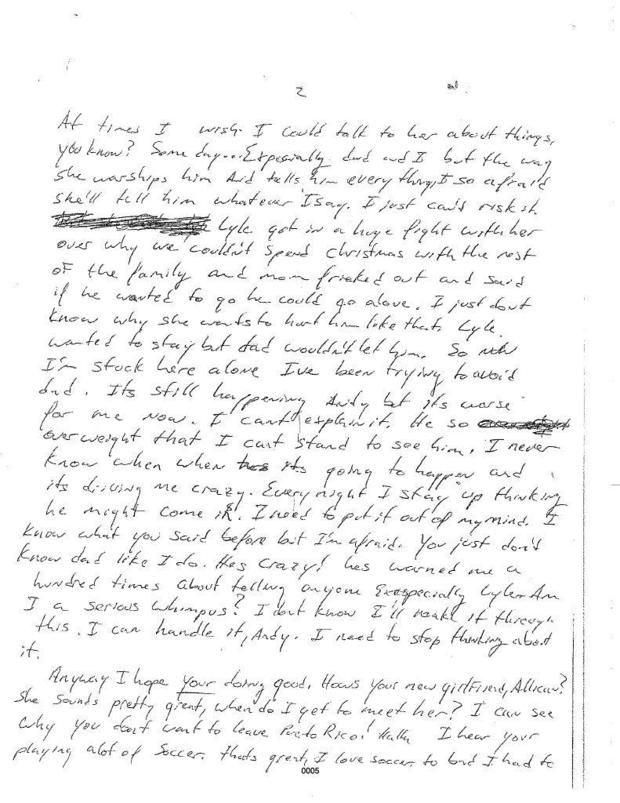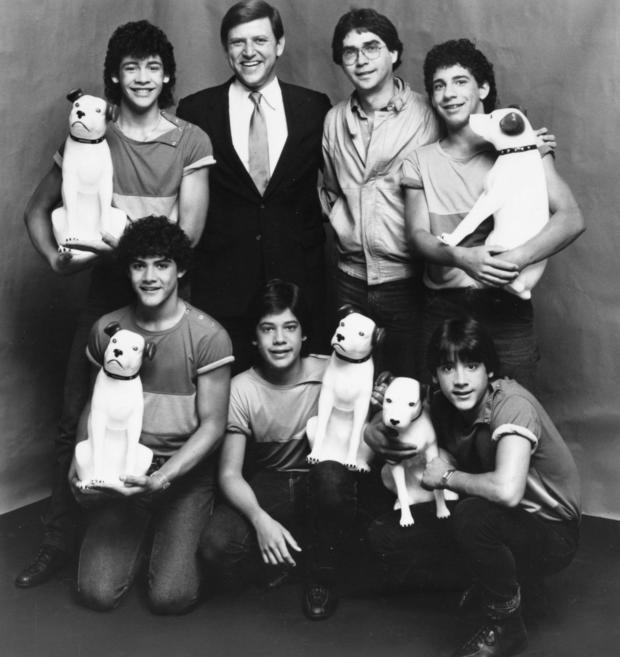CBS News
Menendez brothers await a decision they hope will free them

Lyle and Erik Menendez have been behind bars in California for more than three decades for the 1989 killing of their parents, Jose and Kitty Menendez. They were convicted of first-degree murder and sentenced to life in prison in the notorious case that captured the nation’s attention. Now, the brothers are hoping that new evidence will reopen their case and set them free.
“48 Hours” contributor Natalie Morales speaks to Lyle Menendez from prison as he awaits a judge’s decision in “The Menendez Brothers’ Fight for Freedom,” an all-new “48 Hours” airing Saturday, March 2 at 10/9c on CBS and streaming on Paramount +.
Robert Rand
The Menendez brothers admit that they killed their parents. Instead, the focus of the case has long been on why they did it. They insist that they killed out of fear and in self-defense after a lifetime of physical, emotional and sexual abuse suffered at the hands of their parents.
One of their lawyers, Cliff Gardner, tells “48 Hours” that new evidence corroborates those longstanding claims and lessens their culpability. Gardner argues that Lyle and Erik Menendez should have been convicted of manslaughter instead of first-degree murder, and that if they had been, they would have received a much shorter sentence and been out of prison a long time ago.
Superior Court of the State of California, Los Angeles County
The new evidence includes a letter that Gardner says was written by Erik Menendez to Erik’s cousin, Andy Cano, in December 1988, about eight months before the crime. The letter reads, in part, “I’ve been trying to avoid dad. It’s still happening, Andy, but it’s worse for me now. … Every night I stay up thinking he might come in. … I’m afraid. … He’s crazy. He’s warned me a hundred times about telling anyone, especially Lyle.”
Andy Cano did testify at the brothers’ trials. He said that Erik Menendez at age 13, years before the killings, told him that his father was touching him inappropriately. Prosecutors at trial suggested that Cano was lying.
The brothers were tried twice. Their first trial ended in a mistrial when two juries, one for each brother, couldn’t reach a unanimous decision as to whether Lyle and Erik Menendez were guilty of manslaughter or murder. When they were tried a second time, prosecutors attacked the abuse allegations more aggressively. They referred to the allegations as “the abuse excuse.” That trial resulted in the brothers’ convictions for first-degree murder.
Gardner says this letter is proof that the abuse allegations were not made up. He says the letter was never presented at either trial, and that it was discovered in storage within the last few years by Andy Cano’s mother. Andy Cano died in 2003.
The letter isn’t the only piece of evidence that has surfaced. Roy Rossello, a former member of the Puerto Rican boy band Menudo, has come forward claiming that he was also sexually abused by Jose Menendez, back in the early 80s, when Rossello was a minor and a member of the band. At the time, Jose Menendez was working as an executive at RCA Records, and RCA signed Menudo to a recording contract.
Sony Music/RCA Records
Rossello is now 54 years old. He says in a sworn affidavit filed in 2023 that he went to Jose Menendez’s home in the fall of 1983 or 1984. Rossello would have been between 14 and 15 years old at the time. He says he drank “a glass of wine,” then felt like he had “no control” over his body. He says Jose Menendez took him to a room and raped him. Rossello also states in the affidavit that he was sexually abused by Jose Menendez on two other occasions, right before and right after a performance at Radio City Music Hall in New York.
“When I first heard about it … I cried,” Lyle Menendez told Morales. “For me, it was very meaningful to just have things come out that caused people to really realize, OK … at least this part of what it’s about is true.”
The Menendez brothers’ attorney, Cliff Gardner, filed a habeas petition in May 2023 citing the letter and Rossello’s affidavit as new evidence that proves his clients’ convictions should be vacated.
“The boys were abused as children. They were abused their whole life. … And this is a manslaughter case, not a murder case. It’s just that simple,” Gardner said to “48 Hours” about the Menendez brothers. “My hope in the case is that the judge will realize that this new evidence is indeed credible and persuasive, and he’ll vacate the convictions.”
If that happens, it would be up to the Los Angeles County District Attorney’s Office whether to retry the case. In a statement, the district attorney’s office told “48 Hours” it is investigating the claims made in the habeas petition. It is unclear when a judge will rule in the case.
CBS News
A study to devise nutritional guidance just for you

It’s been said the best meals come from the heart, not from a recipe book. But at this USDA kitchen, there’s no pinch of this, dash of that, no dollops or smidgens of anything. Here, nutritionists in white coats painstakingly measure every single ingredient, down to the tenth of a gram.
Sheryn Stover is expected to eat every crumb of her pizza; any tiny morsels she does miss go back to the kitchen, where they’re scrutinized like evidence of some dietary crime.
Stover (or participant #8180, as she’s known) is one of some 10,000 volunteers enrolled in a $170 million nutrition study run by the National Institutes of Health. “At 78, not many people get to do studies that are going to affect a great amount of people, and I thought this was a great opportunity to do that,” she said.
CBS News
It’s called the Nutrition for Precision Health Study. “When I tell people about the study, the reaction usually is, ‘Oh, that’s so cool, can I do it?'” said coordinator Holly Nicastro.
She explained just what “precise” precisely means: “Precision nutrition means tailoring nutrition or dietary guidance to the individual.”
The government has long offered guidelines to help us eat better. In the 1940s we had the “Basic 7.” In the ’50s, the “Basic 4.” We’ve had the “Food Wheel,” the “Food Pyramid,” and currently, “My Plate.”
CBS News
They’re all well-intentioned, except they’re all based on averages – what works best for most people, most of the time. But according to Nicastro, there is no one best way to eat. “We know from virtually every nutrition study ever conducted, we have inner individual variability,” she said. “That means we have some people that are going to respond, and some people that aren’t. There’s no one-size-fits-all.”
The study’s participants, like Stover, are all being drawn from another NIH study program called All Of Us, a massive undertaking to create a database of at least a million people who are volunteering everything from their electronic health records to their DNA. It was from that All of Us research that Stover discovered she has the gene that makes some foods taste bitter, which could explain why she ate more of one kind of food than another.
Professor Sai Das, who oversees the study at Tufts University, says the goal of precision nutrition is to drill down even deeper into those individual differences. “We’re moving away from just saying everybody go do this, to being able to say, ‘Okay, if you have X, Y and Z characteristics, then you’re more likely to respond to a diet, and somebody else that has A, B and C characteristics will be responding to the diet differently,'” Das said.
It’s a big commitment for Stover, who is one of 150 people being paid to live at a handful of test sites around the country for six weeks – two weeks at a time. It’s so precise she can’t even go for a walk without a dietary chaperone. “Well, you could stop and buy candy … God forbid, you can’t do that!” she laughed.
While she’s here, everything from her resting metabolic rate, her body fat percentage, her bone mineral content, even the microbes in her gut (digested by a machine that essentially is a smart toilet paper reading device) are being analyzed for how hers may differ from someone else’s.
Nicastro said, “We really think that what’s going on in your poop is going to tell us a lot of information about your health and how you respond to food.”
CBS News
Stover says she doesn’t mind, except for the odd sounds the machine makes. While she is a live-in participant, thousands of others are participating from their homes, where electronic wearables track all kinds of health data, including special glasses that record everything they eat, activated when someone starts chewing. Artificial intelligence can then be used to determine not only which foods the person is eating, but how many calories are consumed.
This study is expected to be wrapped up by 2027, and because of it, we may indeed know not only to eat more fruits and vegetables, but what combination of foods is really best for us. The question that even Holly Nicastro can’t answer is, will we listen? “You can lead a horse to water; you can’t make them drink,” she said. “We can tailor the interventions all day. But one hypothesis I have is that if the guidance is tailored to the individual, it’s going to make that individual more likely to follow it, because this is for me, this was designed for me.”
For more info:
Story produced by Mark Hudspeth. Editor: Ed Givnish.
“Sunday Morning” 2024 “Food Issue” recipe index
Delicious menu suggestions from top chefs, cookbook authors, food writers, restaurateurs, and the editors of Food & Wine magazine.
CBS News
A new generation of shopping cart, with GPS and AI

Watch CBS News
Be the first to know
Get browser notifications for breaking news, live events, and exclusive reporting.
CBS News
“All hands on deck” for Idaho’s annual potato harvest

Watch CBS News
Be the first to know
Get browser notifications for breaking news, live events, and exclusive reporting.















